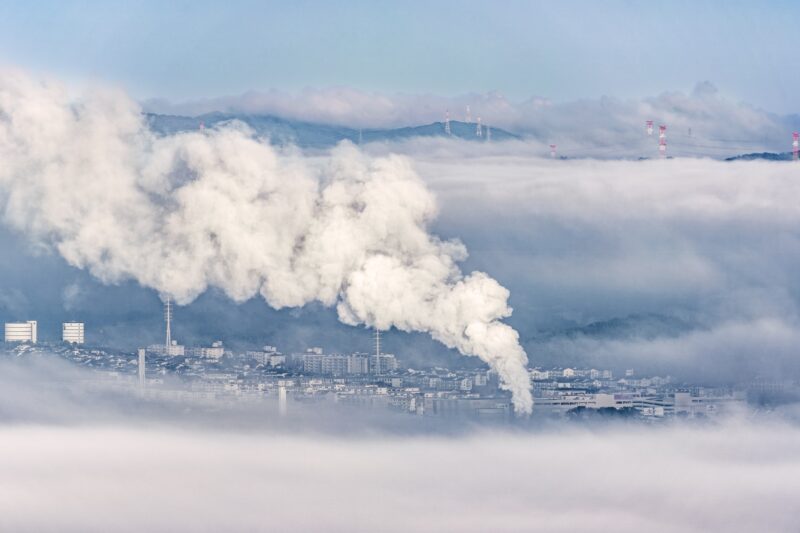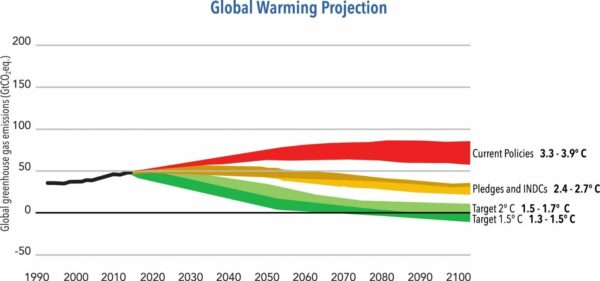No time to lose: the 1.5°C limit in the Paris Agreement
Share

Current goals call for limiting greenhouse gas emissions to their peak by 2020, and then accelerating reductions toward zero. However, current plans and pledges—Intended Nationally Determined Contributions (INDCs)—are nowhere near enough to limit warming to 2°C, let alone to the 1.5°C limit in the Paris Agreement. What’s more, in terms of climate change time, 2020 is right around the corner.
The Climate Action Tracker, a scientific analysis by Climate Analytics, Ecofys, the NewClimate Institute, and the Potsdam Institute for Climate Impact Research, has estimated that INDCs announced by governments ahead of Paris put the world on track to warming of close to 3°C by the end of the century. None of the climate pledges put forward by large emitters amount to a fair contribution to meeting the long-term temperature goal in the Paris Agreement.
Increased Pledges Are Essential
Without significantly greater global emission reductions by 2025 than currently pledged, the increased economic costs of additional rapid reductions in subsequent periods, required to compensate for the lack of early action, will be unnecessarily high—or even infeasible.
The national and international processes in the next few years must significantly boost climate commitments and action to get the world on track to stay below the 1.5°C limit.

Why 1.5° C?
Today, the world is already 1° C warmer than it was before the Industrial Revolution, and we’re already experiencing significant climate impacts. Just about every day we see reports of climate change-related floods, droughts, record heat waves, forest fires, and coral bleaching events. Even if warming this century is held to 1.5°C, many regions will still experience substantial damage from extreme heat waves, including severe damages to water resources and threats to food security. For example, coral reefs, already hit by the recent massive global bleaching event, will still be at grave risk of severe degradation and/or loss. Even just a further half degree warming, to 2°C above preindustrial levels, entails a stark increase in risks and damages that only become worse for even higher degrees of warming.
The recent UN Adaptation Gap Reports showed that the cost of adapting to climate change could hit $500 billion per year by 2050, corresponding to a warming of below 2°C above preindustrial without substantial emission reductions in the intervening period. Adaptation costs increase rapidly at higher levels of warming in specific sectors and countries, and globally.
For these and other reasons, the world’s governments in Paris found the 1.5°C limit to be safer than the 2°C limit and included it in the long-term goal of the agreement.
It Is Possible to Limit Warming to 1.5° C
Given the inadequate action to reduce emissions in recent decades, and with the prospect of ongoing emissions growth in the future without urgent action, the former 2°C goal the world adopted in 2010 already looked tough to achieve by the time of the 2015 Paris conference.
However, current scientific scenarios show that it is physically and economically feasible to limit warming to below 1.5°C by 2100. The 1.5°C limit requires similar transformations in the energy system as would be needed to hold warming to the 2°C limit.
Emmission Reductions Crucial
But both the 1.5°C limit and the former 2°C goal demand immediate action and strong emission reductions in the next 10 to 15 years. Globally, greenhouse gas emissions need to peak by around 2020 before beginning a rapid decline toward zero.
Beyond 2030, decarbonization must progress faster to limit warming to 1.5°C. Carbon dioxide (CO2) emissions from energy and industry must be zero globally around 2050 for a 1.5°C limit—about 10 to 15 years earlier than for the previous 2° C limit.
Also Key
Current scientific scenarios underscore the importance of CO2-removal technologies to compensate for the insufficient emissions reductions to date. Limiting warming to any level below 2° C will require substantial removal in the second half of this century of CO2 already in the atmosphere.
Unfortunately, this will be needed even after achieving rapid reductions of CO2 emissions toward zero by 2050.
A technology commonly assumed in energy-model projections is bioenergy with carbon capture and storage, which is not without risks and raises valid sustainability concerns. Comprehensive policies will be needed to safeguard against risks such as threats to food security, which could result from bad management of this technology. However, present-day climate extremes also pose large risks to food security in many countries because of crop and livestock losses and spikes in food prices.
While these technologies will pose challenges, and need substantial research, it is important not to get bogged down in this issue, as there are far more urgent things to be done, such as starting rapid emissions reductions.
The sooner and faster we reduce emissions, the less the next generation will need to rely on carbon-removal technologies and deal with their risks and challenges.
Most Urgent Now: Reduce Global Emissions
The first key step to limiting global emissions to their peak and starting reduction toward zero is rapid replacement of fossil fuel energy sources with renewables. Costs of renewable energy have declined dramatically in recent years and in some instances are even lower than assumed in energy-economic models used to assess the feasibility of global warming limits. Renewables have major benefits for sustainable development, including eliminating air pollution from power generation and reducing water needs for cooling thermal power stations, which is an increasing problem in places like India.
The second step to zero emissions is significant improvements in energy efficiency in key sectors (transport, industry, and buildings), particularly from 2030 on. This would reduce overall primary energy needs and ultimately improve economic efficiency while lowering the environmental footprint of energy use substantially.
This article was written for the Stanley Foundation and was originally published on July 25 2016 in The Courier.












